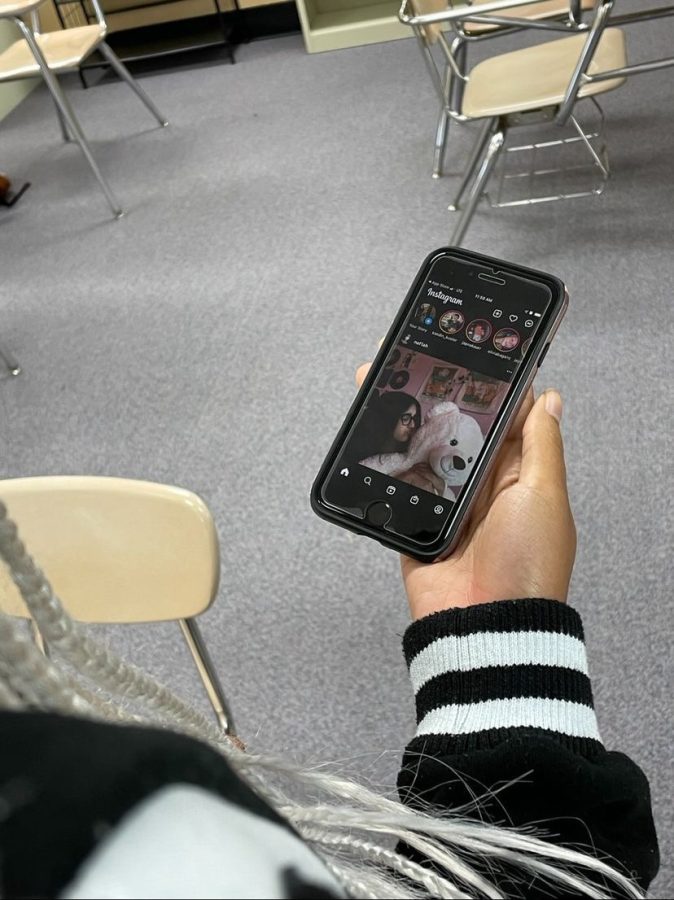How does social media affect teenagers?
Jocelyn Vannoy, a junior at Neuqua, scrolls through Instagram on her phone
November 18, 2021
A few weeks ago, Instagram, Facebook and many other social media apps shut down. When this happened, many people (especially teenagers), panicked and did not have as much of an enjoyable time on their phone. Why? Is it because teenagers are addicted, or is it just because of the lack of opportunities available for them to satisfy their boredom? Is it true that teenagers really cannot live without social media?
My opinion on this is that sadly, it’s true. Teenagers really cannot put their phones down for one second when they are browsing through their social media apps. This is mainly because of their desire to always be in touch with people.
As technology is advancing, people are finding more ways to keep themselves busy online. Teenagers in particular feel pressured to be in contact with people, however at the same time they want to stay secluded. Social media is a way for them to not talk to people face to face, but still connect. According to https://www.shepherdshillacademy.org/, “as the teenage years are a pivotal time for social growth in teens, this desire can be harmful as the teen may not develop healthy or appropriate social skills”. Teens may have panicked when the social media apps shut down because they were afraid of making face to face interactions.
As this might make the teenager feel comfortable temporarily, it does not help them in the long run, as it can lead to social anxiety disorder. Currently, social anxiety disorder is the most common mental health disorder in the country and it is most popular with teenagers. It can be caused by limited interaction with others and getting used to online interactions. According to https://polaristeen.com/, it “leads to diminished relationships, withdrawal and overall isolation.” This actually causes people to use social media even more, as it helps them withdraw from social interactions, so it ends up being a circular pattern.
During Covid-19, the rate of social media usage increased significantly. The pandemic caused a huge decline in social interactions as people (not just teens) were stuck inside their homes. According to Vox.com, “this meant that social media has become one of the only ways to be with friends and family”. As people are now going back to their normal lives, they have become dependent on using social media as it has become part of their daily routine, and this does not just apply to teenagers.
However, according to Kellan Terry, Brandwatch’s director of communications. “In the pandemic we’re constantly looking for that social stimulation. Social media somewhat filled the gap but not wholly.” She believes that even though people depended on social media during the pandemic, it has not replaced face to face interaction. Social media has filled the gap between people over long distances, but people still prefer talking to their friends in person. It doesn’t change the fact that people are addicted to social media, but it is relieving to see people still wanting to meet their friends in person.
Overall, people, especially teenagers, are addicted to social media and cannot live without it. Social media makes teenagers go through a circular withdrawal pattern as they keep coming back to these apps no matter how hard they try to stay away from them. The pandemic has not made things easier, as it has made people lose their liking for social interaction. However, some people do want to have social interactions over social media, and the pandemic has made them miss meeting their friends in person. Hopefully, as the pandemic gets better, more people will understand the importance of face to face interactions, and will shy away from social media.


